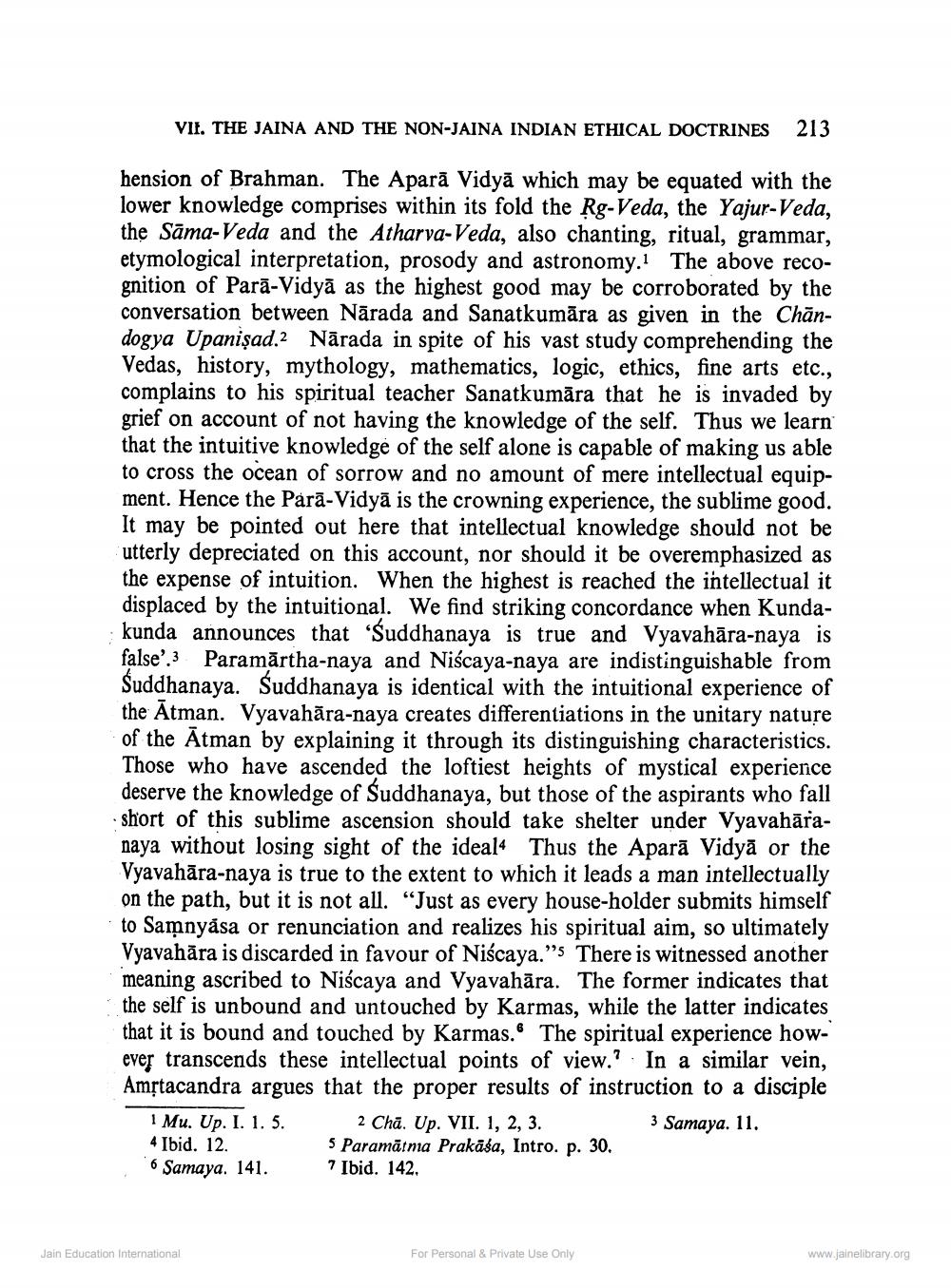________________
VIF. THE JAINA AND THE NON-JAINA INDIAN ETHICAL DOCTRINES
213
hension of Brahman. The Aparā Vidyā which may be equated with the lower knowledge comprises within its fold the Rg-Veda, the Yajur-Veda, the Sāma-Veda and the Atharva-Veda, also chanting, ritual, grammar, etymological interpretation, prosody and astronomy. The above recognition of Parā-Vidyā as the highest good may be corroborated by the conversation between Nārada and Sanatkumāra as given in the Chandogya Upanişad.2 Nārada in spite of his vast study comprehending the Vedas, history, mythology, mathematics, logic, ethics, fine arts etc., complains to his spiritual teacher Sanatkumāra that he is invaded by grief on account of not having the knowledge of the self. Thus we learn that the intuitive knowledge of the self alone is capable of making us able to cross the ocean of sorrow and no amount of mere intellectual equipment. Hence the Parā-Vidyā is the crowning experience, the sublime good. It may be pointed out here that intellectual knowledge should not be utterly depreciated on this account, nor should it be overemphasized as the expense of intuition. When the highest is reached the intellectual it displaced by the intuitional. We find striking concordance when Kundakunda announces that 'Suddhanaya is true and Vyavahāra-naya is false'.3 Paramārtha-naya and Niscaya-naya are indistinguishable from Suddhanaya. Suddhanaya is identical with the intuitional experience of the Atman. Vyavahāra-naya creates differentiations in the unitary nature of the Ātman by explaining it through its distinguishing characteristics. Those who have ascended the loftiest heights of mystical experience deserve the knowledge of Suddhanaya, but those of the aspirants who fall short of this sublime ascension should take shelter under Vyavahāranaya without losing sight of the ideal4 Thus the Aparā Vidyā or the Vyavahāra-naya is true to the extent to which it leads a man intellectually on the path, but it is not all. “Just as every house-holder submits himself to Samnyása or renunciation and realizes his spiritual aim, so ultimately Vyavahāra is discarded in favour of Niscaya." There is witnessed another meaning ascribed to Niscaya and Vyavahāra. The former indicates that the self is unbound and untouched by Karmas, while the latter indicates that it is bound and touched by Karmas. The spiritual experience however transcends these intellectual points of view.? . In a similar vein, Amstacandra argues that the proper results of instruction to a disciple 1 Mu. Up. I. 1.5. 2 Chā. Up. VII. 1, 2, 3.
3 Samaya. 11. 4 Ibid. 12.
5 Paramātma Prakāśa, Intro. p. 30. Samaya. 141. 7 Ibid. 142.
Jain Education International
For Personal & Private Use Only
www.jainelibrary.org




